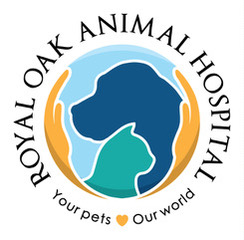Library
-
Anaplasmosis is a tick-borne disease caused by the infectious bacterial organism Anaplasma phagocytophilum. It is transmitted through bites of the deer tick (also known as the black-legged tick) and the Western black-legged tick.
-
This handout discusses aspergillosis in dogs, an infection, growth, or allergic response caused by the Aspergillus fungus. If your dog becomes infected, it can be confined to the nasal passages (nasal aspergillosis), or it can spread throughout the body (systemic aspergillosis). The clinical signs, diagnosis, treatment, and prognosis of both conditions are outlined.
-
Babesiosis is a tick-borne infection due to Babesia protozoal parasites. The disease primarily spreads through an infected tick's bite, but direct animal-to-animal transmission may also occur. Dogs typically present with the acute and severe form of babesiosis, characterized by abnormal dark urine, fever, weakness, pale mucous membranes, depression, swollen lymph nodes, and an enlarged spleen. The disease can be transmitted to humans through a tick bite.
-
Brucellosis is a contagious bacterial infection that can cause a number of reproductive problems, including infertility and abortion in breeding dogs. Male dogs infected with brucellosis develop epididymitis, an infection of the testicle. Female dogs infected with brucellosis develop an infection of the uterus. The infection is usually diagnosed by a blood test (rapid slide agglutination test). Treatment with antibiotics is not significantly effective and infected dogs should be removed from the breeding population. In the United States, brucellosis is a reportable disease.
-
Campylobacteriosis is a bacterial intestinal infection usually acquired by exposure to raw meat, poultry, or infected water, but can be spread between pets and humans. Signs of infection are watery or mucoid diarrhea with straining, possible cramping, lethargy, and fever. Testing, treatment and prevention are discussed.
-
Capillaria is a small internal parasite, often less than half of a centimeter in length. They are closely related to intestinal worms, though they can live in a variety of locations within the body. Diagnosis can be difficult because the eggs of Capillaria are shed only on an intermittent basis. While the parasite is easily eliminated with a dewormer, your dog may require additional medications to decrease the inflammation associated with the infection.
-
COVID-19 is a viral respiratory disease of humans that was first discovered in late 2019. The illness is caused by the virus SARS-CoV-2, which is a new coronavirus that has not previously been identified in humans. Certain animals can be infected by the COVID-19 virus, but it appears to be infrequent. Dogs and cats seldom show severe clinical illness if infected with COVID-19.
-
This handout summarizes Chagas disease in dogs. Caused by a protozoal parasite called Trypanosoma cruzi, it is spread by the bite of infected insects or ingestion of infected insects and rodents. The clinical signs of the condition, along with its treatment, prevention, and risk to human health are outlined.
-
The birth of a baby or the adoption of a new child can be associated with both excitement and stress. It is important to prepare your pet for the new addition. Before the baby arrives, introduce novel sounds and scents, and be sure your pet has access to safe resting spaces. Socialize your young pet to children from the start. Children should be directly supervised by an adult when they interact with pets.
-
COVID-19 is a disease caused by the coronavirus SARS-CoV-2. Current evidence suggests that person-to-person spread is the main source of infection. While there is evidence of transmission from humans to dogs and cats, it does not appear common. If you suspect that you are ill with COVID-19, you should take the same precautions with your pet as you would with people.


